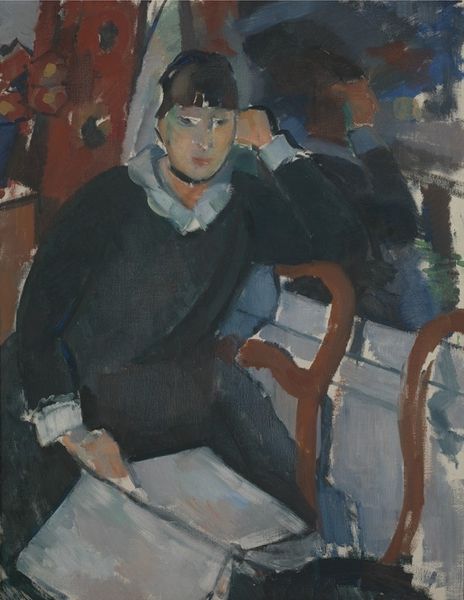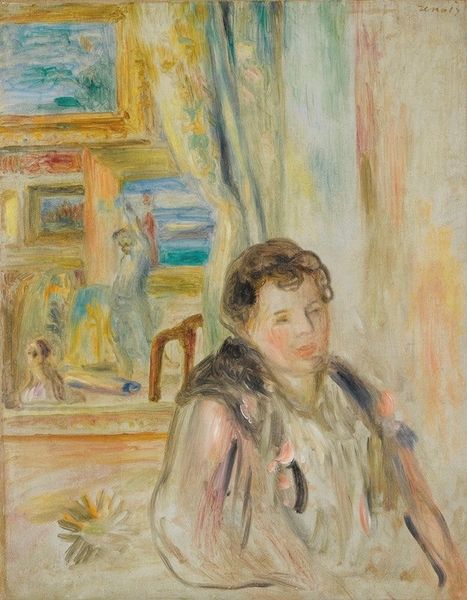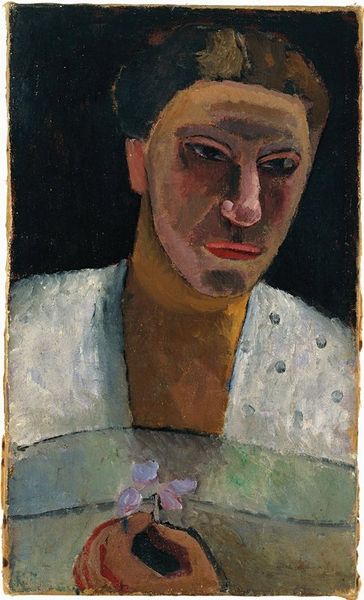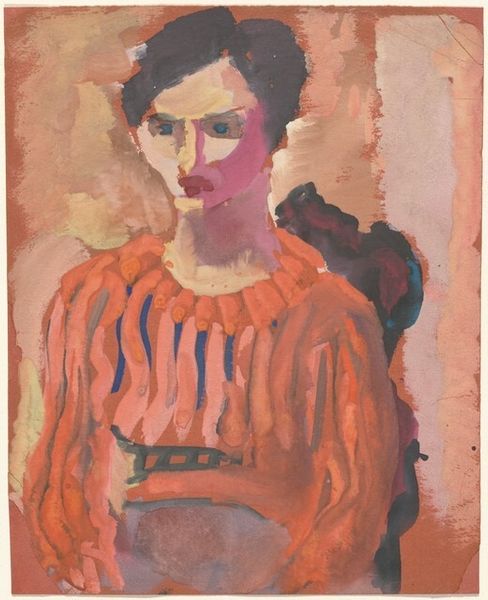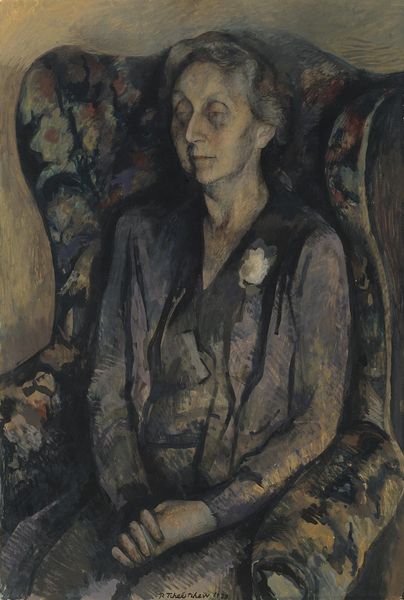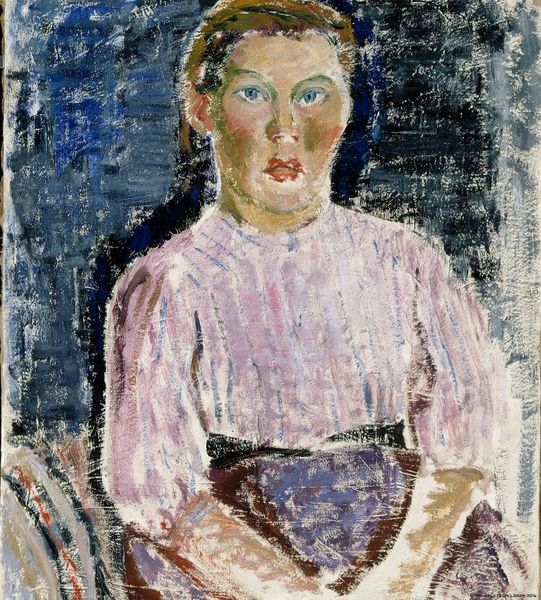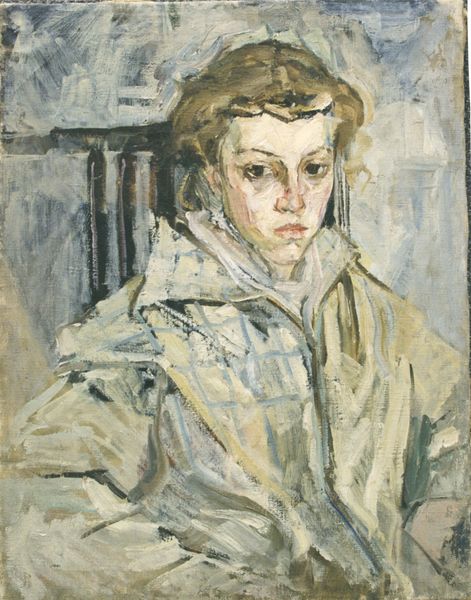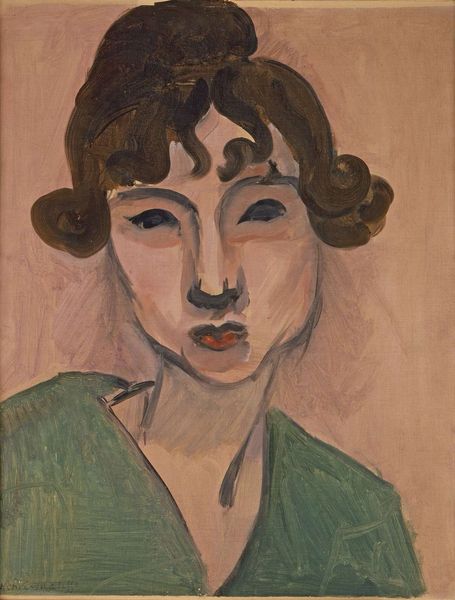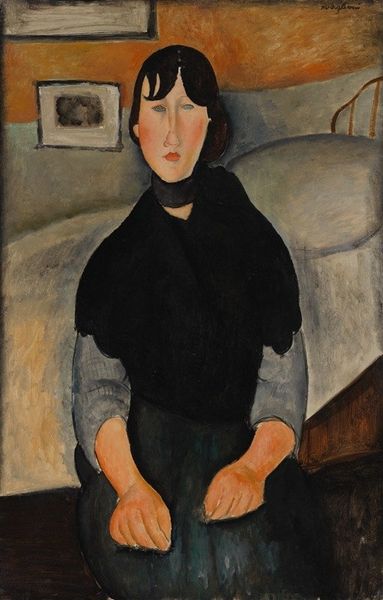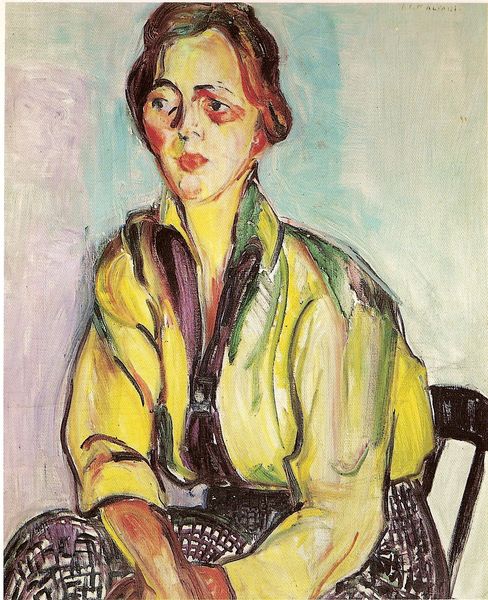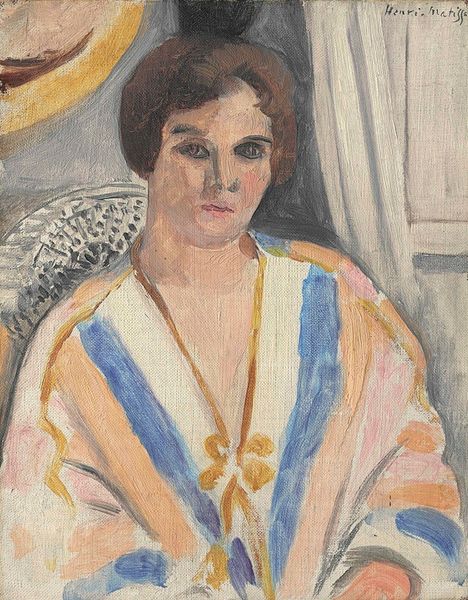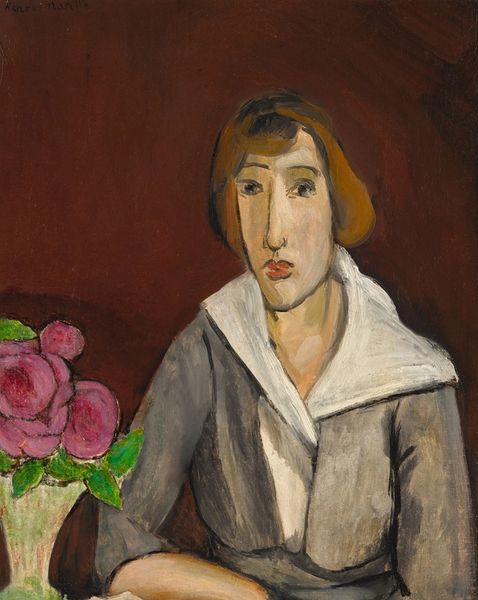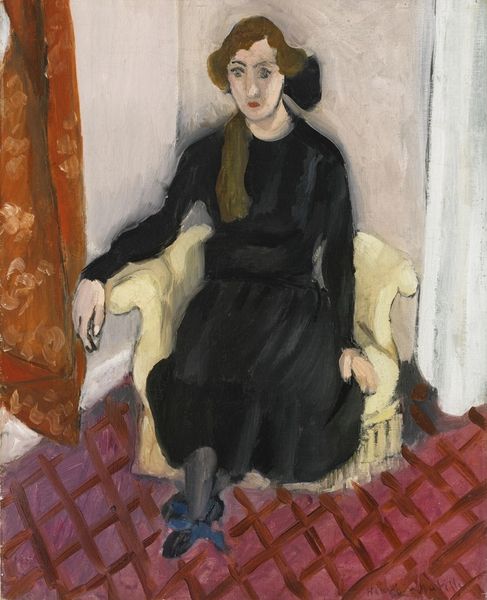
Copyright: Public domain US
Curator: Looking at this portrait, I’m struck by its quiet intensity. It feels less about outward presentation and more about an inner world. Editor: Yes, it certainly feels introspective. I find myself immediately drawn to the fractured reflection in the mirror behind her. Is that her, or something she has broken in her life? Curator: That's Henri Matisse’s "Woman with Anemones," created around 1919. The oil on canvas work is interesting for what it conveys symbolically about postwar Europe. It captures this very mood: reflection and quiet disruption. Editor: Given the time period, it seems pertinent to ask if Matisse is capturing a sense of disillusionment. The anemones, often associated with forsaken love, juxtaposed against the rather stoic face of the subject… It begs a narrative. Was this woman left behind, or simply choosing to move inward after such collective trauma? Curator: It’s likely both. Matisse often uses flowers to represent vitality and emotional states, so to see them combined with what could be construed as damage is striking. He’s hinting at something complex. Editor: Do you feel that Matisse’s choices speak to the gendered experience of this historical trauma? The pressure placed on women during wartime, only to return to domestic expectations afterward, would surely provoke internal fracture, no? Curator: Absolutely. It touches on a quiet resilience, a re-evaluation symbolized not only by the fractured reflection but also by the painting within the painting behind the bouquet. This is her space. Editor: Looking closer at those anemones now, I see that even within the beauty, there are muted colors – almost a subtle acknowledgement of loss amidst renewed growth. What do you make of the model's grey attire? Curator: I read it as an act of humility, or acceptance. Almost every visual element reflects a moment in limbo: her choice to wear gray, that her figure appears cropped, and that she’s enclosed within an intimate interior. Editor: So ultimately, is this portrait more about fragmentation or endurance in the face of those historical forces? I suppose, perhaps it’s both – inseparable elements. Curator: Precisely. It is Matisse revealing that within individual iconography, cultural memory is made enduring through visual symbols.
Comments
No comments
Be the first to comment and join the conversation on the ultimate creative platform.
